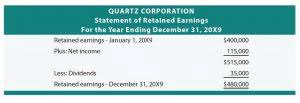Accounts Payable: Definition, Example, Journal Entry

This is because it will help you to prevent fraudulent billing practices. Besides the above-mentioned payment terms, the other set of standard payment terms include 2/10 net 30. After these transactions, your Cash account has a balance of $8,000 ($10,000 – $2,000), and your Equipment account has a balance of $2,000. Consider a scenario where a business purchases $5,000 of equipment by taking a loan and then earns $2,000 in revenue. For the past 52 years, Harold Averkamp (CPA, MBA) hasworked as an accounting supervisor, manager, consultant, university instructor, and innovator in teaching accounting online. For the past 52 years, Harold Averkamp (CPA, MBA) has worked as an accounting supervisor, manager, consultant, university instructor, and innovator in teaching accounting online.
Internal Payments
- For example, the purchased items could have arrived in poor condition or the wrong quantity could have been sent.
- In a nutshell, accounts payable represents the money a company must pay out to its suppliers in the near future, typically within 30 to 90 days.
- When confirming accounts payable, your company’s auditors must take a sample of accounts payable.
- And your accounts payable represent your borrowings from such suppliers.
- Interest Revenues account includes interest earned whether or not the interest was received or billed.
This is because Robert Johnson’s current liability reduces by $200,000. The offsetting credit entry for such a transaction is made to the cash account. You need to first calculate the total purchases that you have made from your suppliers.
What is the difference between accounts receivable and accounts payable?
Therefore, a combination of accounts payable and accounts receivable is important for your business’s performance. Accounts payable are found on a firm’s balance sheet, and since they represent funds owed to others they are booked as a current liability. Meanwhile, obligations to other companies, such as the company that cleans the restaurant’s staff uniforms, fall into the accounts payable category. Both of these categories fall under the broader accounts payable category, and many companies combine both under the term accounts payable. When using the indirect method to prepare the cash flow statement, the net increase or decrease in AP from the prior period appears in the top section, the cash flow from operating activities. This chart is useful as a quick reference to determine whether an increase or decrease in a particular type of account should be recorded as a debit or a credit.
- If a company’s internal accounts payable process and collection policies are efficient, the outcome is an increase in free cash flow (FCF) and reduction in liquidity risk.
- This implies that you are meeting your short-term obligations at a faster rate.
- When you provide goods or services on credit, the amounts due are recorded in accounts receivable until you receive payment.
- AP often handles a supply of sales tax exemption certificates issued to managers to ensure qualifying business purchases don’t include sales tax expenses.
- Accounts Payable and Receivable are usually different departments in larger companies.
- This is because the accounts receivables are those which the company would receive from the products or services which a company provided to its clients.
What does the AP department do?
Ensure that the bill includes vendor name, authorization, date, and verified and matching requirements to the purchase order. When the item is received, the vendor should include a shipping receipt. To work productively, you need to design an efficient system to manage the payment process. Balance sheet accounts are separated into current and noncurrent accounts. Now, we’ll extend the assumptions across our forecast period until we reach a COGS balance of $325 million in Year 5 and a DPO balance of $135 million in Year 5. Thus, debiting Accounts Receivable with $300,000 means an increase in Accounts Receivable by the same amount.

Since you purchase goods on credit, the accounts payable is recorded as a current liability on your company’s balance sheet. It is important to note that the accounts payable category represents the short-term obligations of your business. The debit offset for this entry generally goes to an expense account for the good accounts payable natural balance or service that was purchased on credit. The debit could also be to an asset account if the item purchased was a capitalizable asset. When the bill is paid, the accountant debits accounts payable to decrease the liability balance. The offsetting credit is made to the cash account, which also decreases the cash balance.
Because the rent payment will be used up in the current period (the month of June) it is considered to be an expense, and Rent Expense is debited. If the payment was made on June 1 for a future month (for example, July) the debit would go to the asset account Prepaid Rent. From the table above it can be seen that assets, expenses, and dividends normally have a debit balance, whereas liabilities, capital, and revenue normally have a credit balance.
The terms “credit balance” and “debit balance” are often used interchangeably. In extremely rare cases, the companies extend the credit to their suppliers. The big companies usually provide a credit line to their important suppliers during economic distress. For example, on February 05, 2020, the company ABC Ltd. bought the inventory in with a cost of $500 on credit. Then on February 18, 2020, it paid $500 to its supplier for purchased inventory on February 05, 2020.
Normal balance FAQs
It minimizes the resources required for processing payments and managing paperwork, ultimately lowering operational expenses. Manual processing of invoices and payments can be time-consuming and prone to errors. With automation, you can streamline these tasks, reducing the time spent on administrative work and freeing up your team to focus on more strategic activities. The owner or someone else with financial responsibility, like the CFO), approves the PO. Purchase orders help a business control spending and keep management in the loop of outgoing cash. The change in accounts payable subtracts the ending balance in the current year from the prior year’s ending balance.

Depending on the function performed by the salaried employee, Salaries Expense could be classified as an administrative expense or as a selling expense. If the employee was part of the manufacturing process, the salary would end up being part of the cost of the products that were manufactured. By having many revenue accounts and a huge number of expense accounts, a company will be able to report detailed information on revenues and expenses throughout the year. For reference, the chart below sets out the type, side of the accounting equation (AE), and the normal balance of some typical accounts found within a small business bookkeeping system. In accounting, the normal balances of accounts are the side where increases are typically recorded.
This means that contra accounts reduce the net amount reported on the financial statement and business transaction. A contra account is an optional accounting tool you can use d to improve the accuracy of financial statements. A healthy company will have more assets than liabilities, and will therefore have a net positive cash flow. Cash equivalents are short-term investments that you can convert quickly into cash with normal balances. This includes transactions with customers, suppliers, employees, and other businesses. A cash account is an expected normal balance account that includes cash and cash equivalents.
 Авточасти на ниски цени
Ксенон
Части за турбокомпресори
Акумулатори
Авточасти на ниски цени
Ксенон
Части за турбокомпресори
Акумулатори
